Tritium Transport in Breeding Blankets
Remi Delaporte-Mathurin
November 14th 2023
Tritium 101
Cost: $30,000 per gram

Half-life: 12 years
☢
❓How ❓
Lithium is used to breed tritium


Magnet
Breeding blanket
The breeding blanket
There are several concepts of breeding blanket
FLiBe
Li
LiPb
Self
Water
He
He+Water
Liquid
Segmented
Choose your breeder
Choose your coolant
Choose your geometry
Li in ceramics
Water Cooled Lithium-Lead


First Light Fusion

Dual Cooled Lithium-Lead

Helium Cooled Pebble Bed
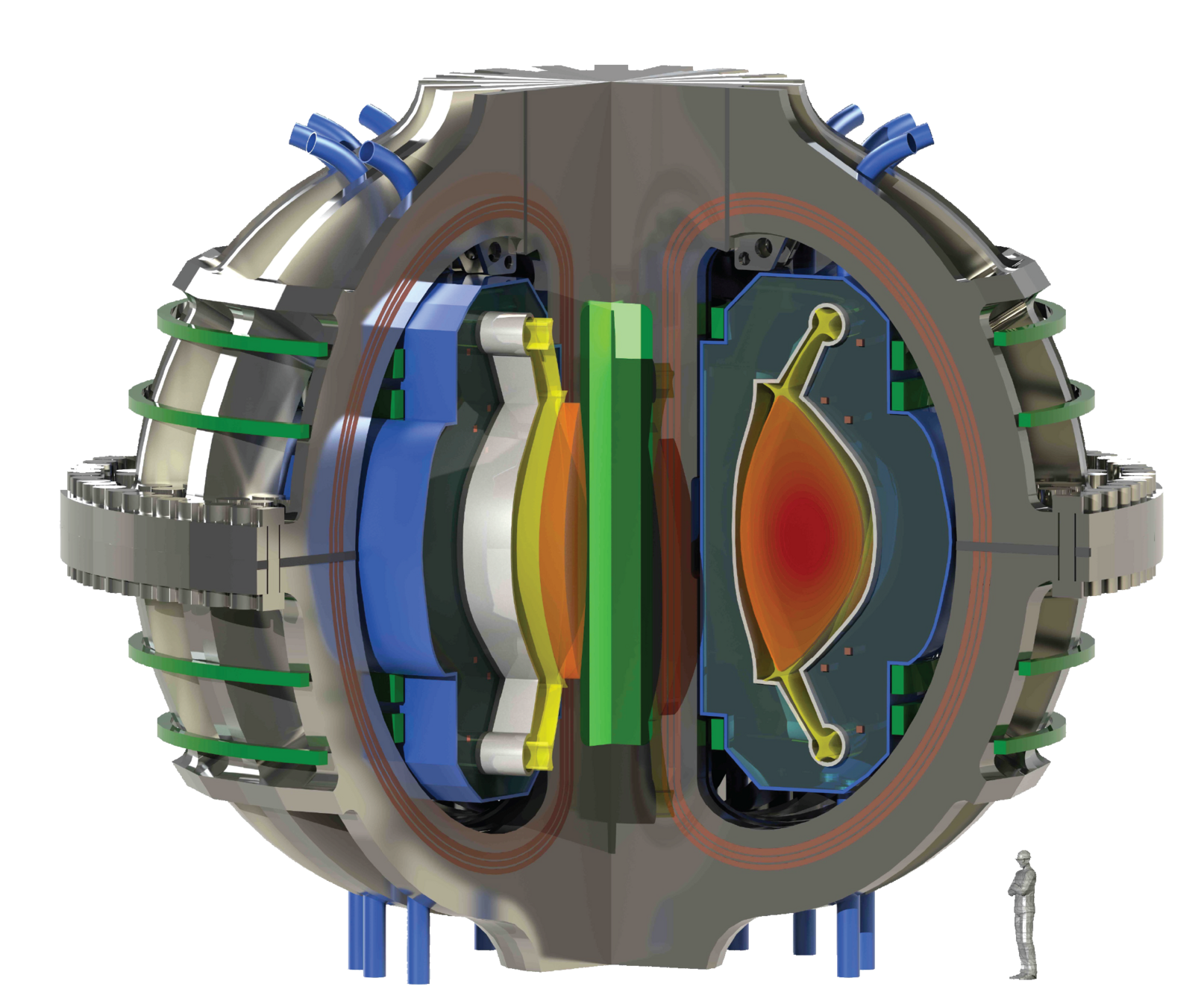
⚛️Breeding tritium
🛡️Shield from neutrons
🔥Extract heat
Liquid Immersion Blanket
FLiBe
The LIB has many advantages

In order to design a breeding blanket we need to...
✅Understand T transport in the breeder
✅Understand the interaction of T with the solid materials
✅Develop and validate modelling tools for design optimisation
✅Demonstrate a proof a concept
Experimental techniques
FESTIM modelling
LIBRA experiment
Understanding Tritium Transport in Materials
Several mechanisms are at stake


Processes are thermally activated
Dissociation/recombination
Diffusion
Trapping
Potential energy
These mechanisms are characterised by material properties

- Diffusivity
- Solubility
- Permeability
- Recombination coeff.
- Dissociation coeff.
- Trapping rate
- Detrapping rate
Arrhenius law
Properties can be calculated with Molecular Dynamics

Grigorev et al Molecular dynamics simulation of hydrogen and helium trapping in tungsten, JNM, Volume 508, 2018
3 nm
Properties can also be measured experimentally
Thermo-desorption experiments provide information on retention
Stage 1: load with H
Stage 2: heat up to desorb H


Tungsten
Beryllium
Desorption flux (H m\(^{-2}\) s\(^{-1}\))
O.V Ogorodnikova et al Deuterium retention in tungsten in dependence of the surface conditions, JNM, 313–316, 2003
Baldwin et al Experimental study and modelling of deuterium thermal release from Be–D co-deposited layers, Nucl Fus, vol. 54, 2014
Permeation experiments measure the diffusivity and solubility
Sample
- Impose partial pressure of H on one side
- H permeates through the sample
- Measure the desorption flux on the other side
Sample
- Impose partial pressure of H on one side
- H permeates through the sample
- Measure the desorption flux on the other side
- Fit with the master curve to identify \( \Phi \) and \(D\)
- Repeat for different temperature

Permeation experiments measure the diffusivity and solubility
What about molten salts?
FLiBe
metal membrane

FLiBe solubility
HYPERION project
Source: HTM database
HYPERION principle

H concentration
Permeation flux
H concentration
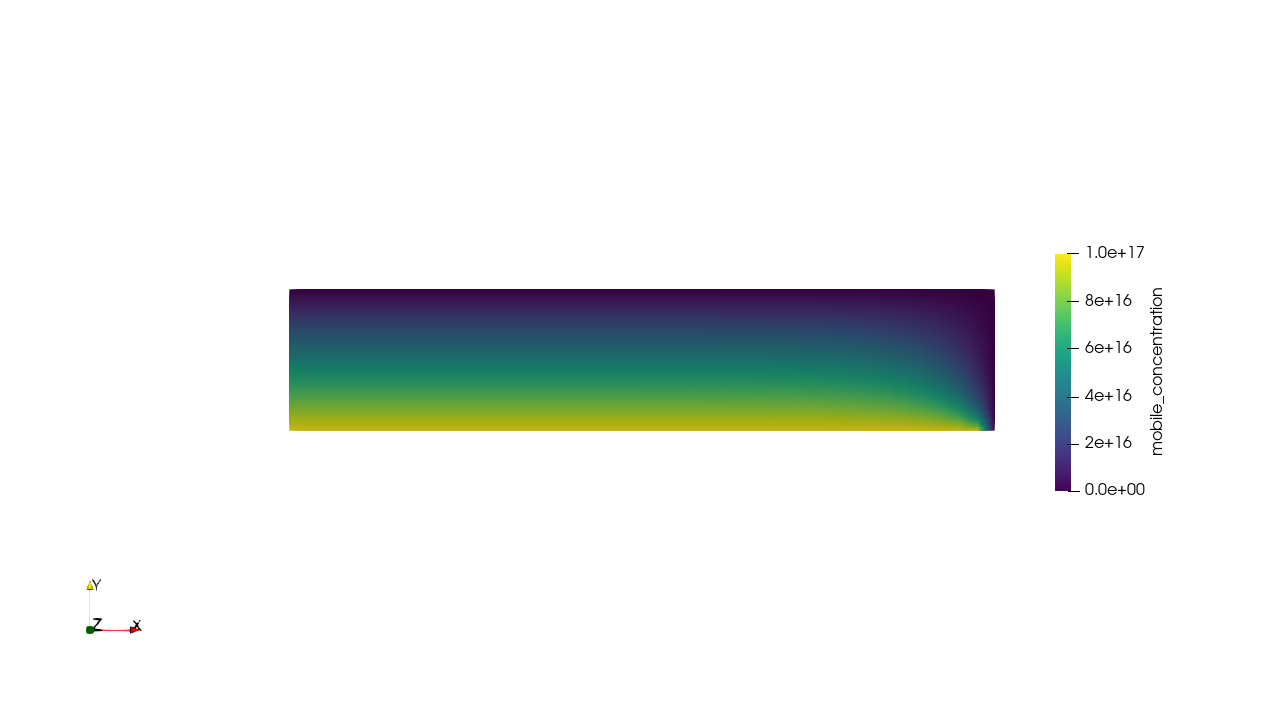
Transport through the salt was simulated with FESTIM
\( c = K_H \ P_\mathrm{up} \)
\( c = 0 \)
\( \mathrm{H \ m^{-3}} \)
Permeation through the crucible wall
FLiBe
The permeation fluxes are estimated w/wo edge effects

\( K_H = 10^{17} \ \mathrm{H \ m^{-3} \ Pa^{-1}}\)
\( D = 5.66\times10^{-7} \exp (-0.39 / k_B T) \ \mathrm{m^{2} \ s^{-1}}\)
\(P_\mathrm{up} = 1 \ \mathrm{Pa} \)
Component scale modelling with FESTIM

WCLL unit
At the macroscale, continuous fields can be used
Fick's second law of diffusion
Fick's first law of diffusion
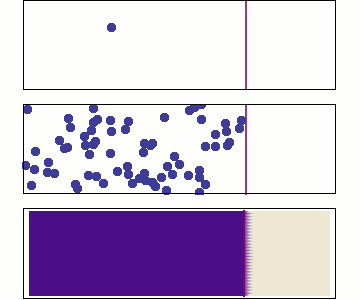
Trapping is modelled with reaction rate theory
McNabb & Foster model
Hydrogen transport
Heat transfer
diffusion and trapping
FESTIM solves the H transport equations and heat transfer
\( T \)






Used at


Check it out on GitHub
FESTIM is a versatile tool

Thermo-desorption
Plasma facing components


Tungsten
Beryllium

Modelling permeation barriers
No barrier
Barrier

FESTIM has been used to simulate breeding blankets
Simulation of a WCLL breeding blanket from CAD files
1) Mesh generation
2) Heat transfer simulation
3) 2D slice
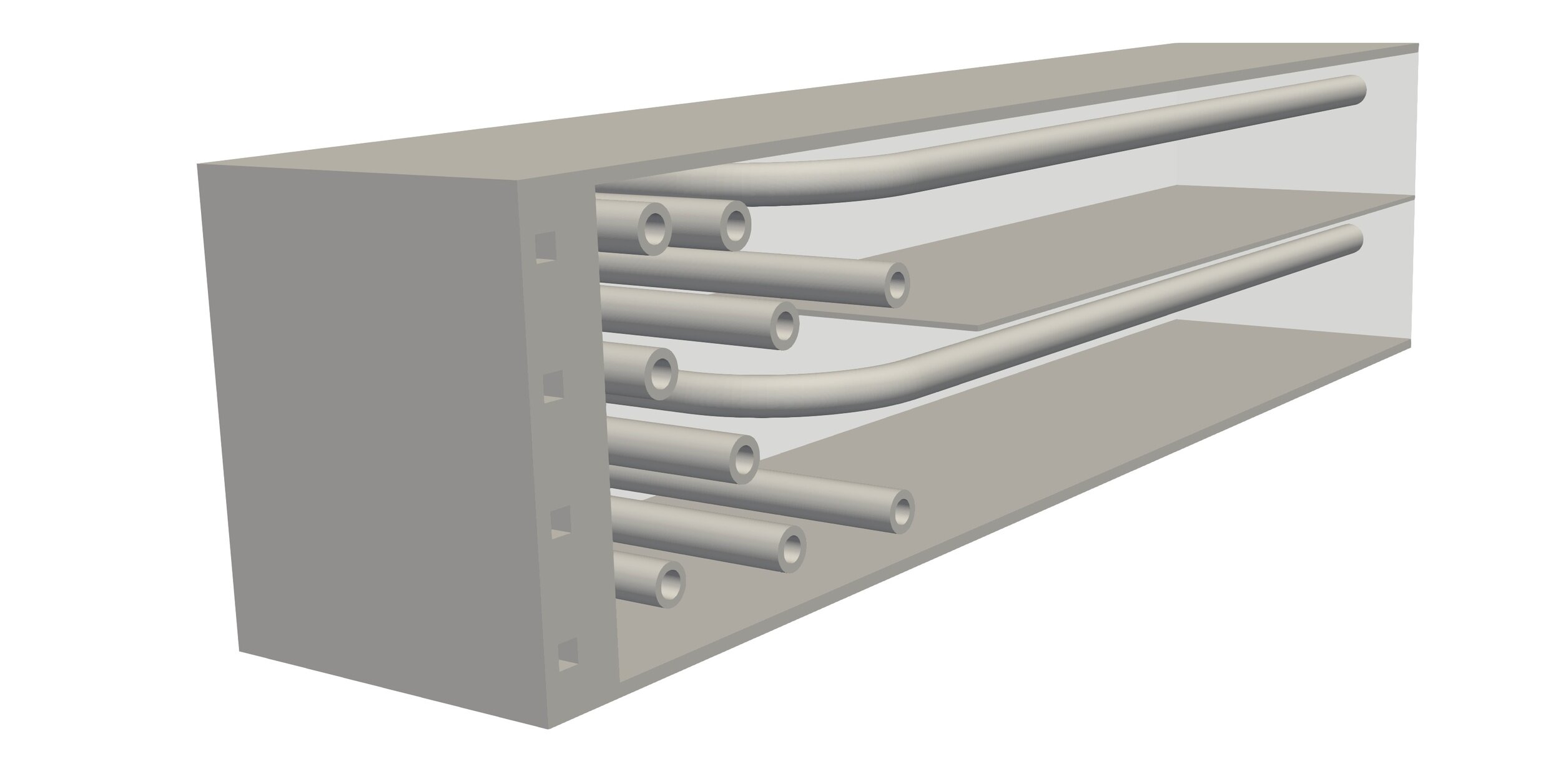
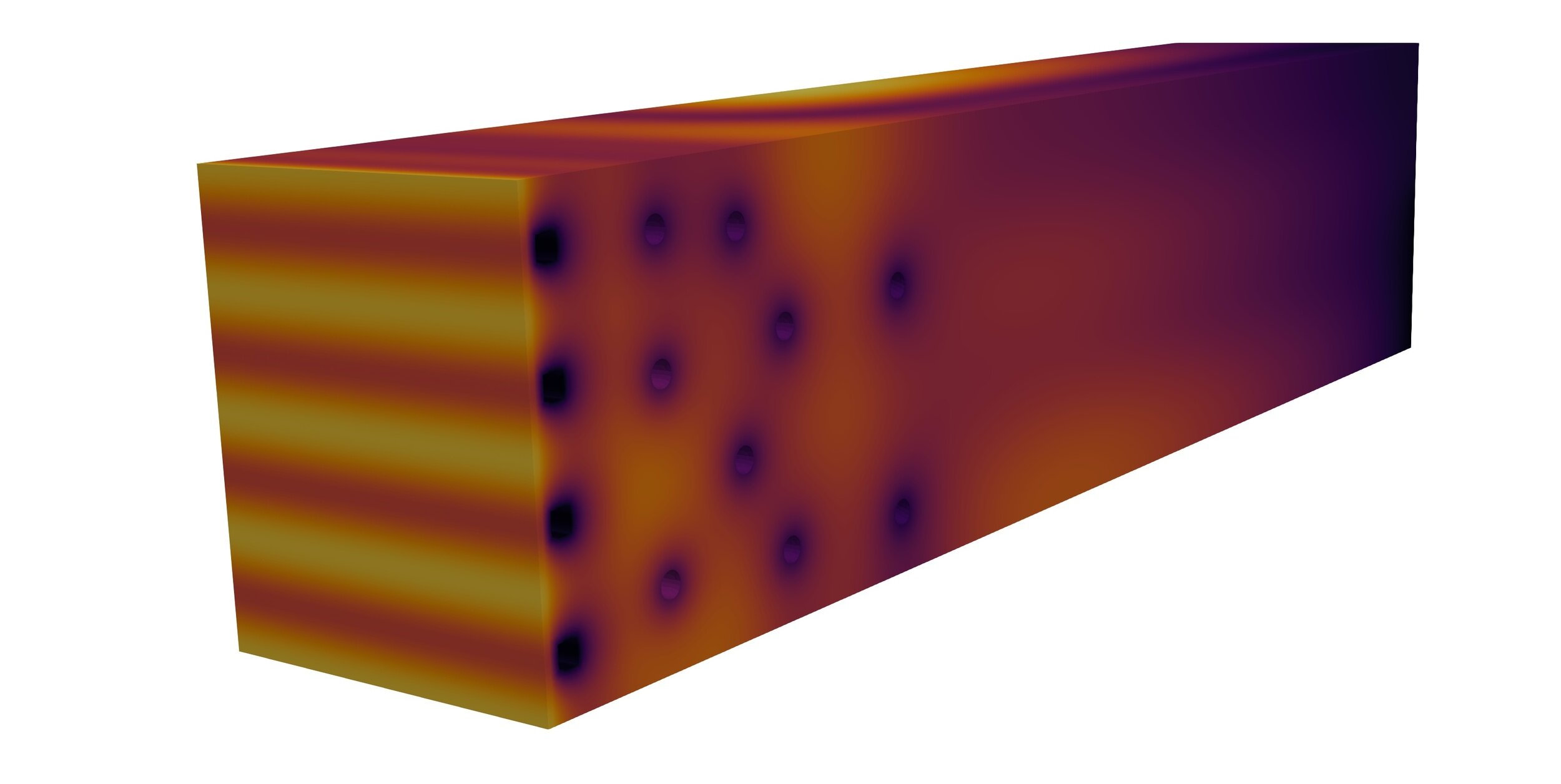
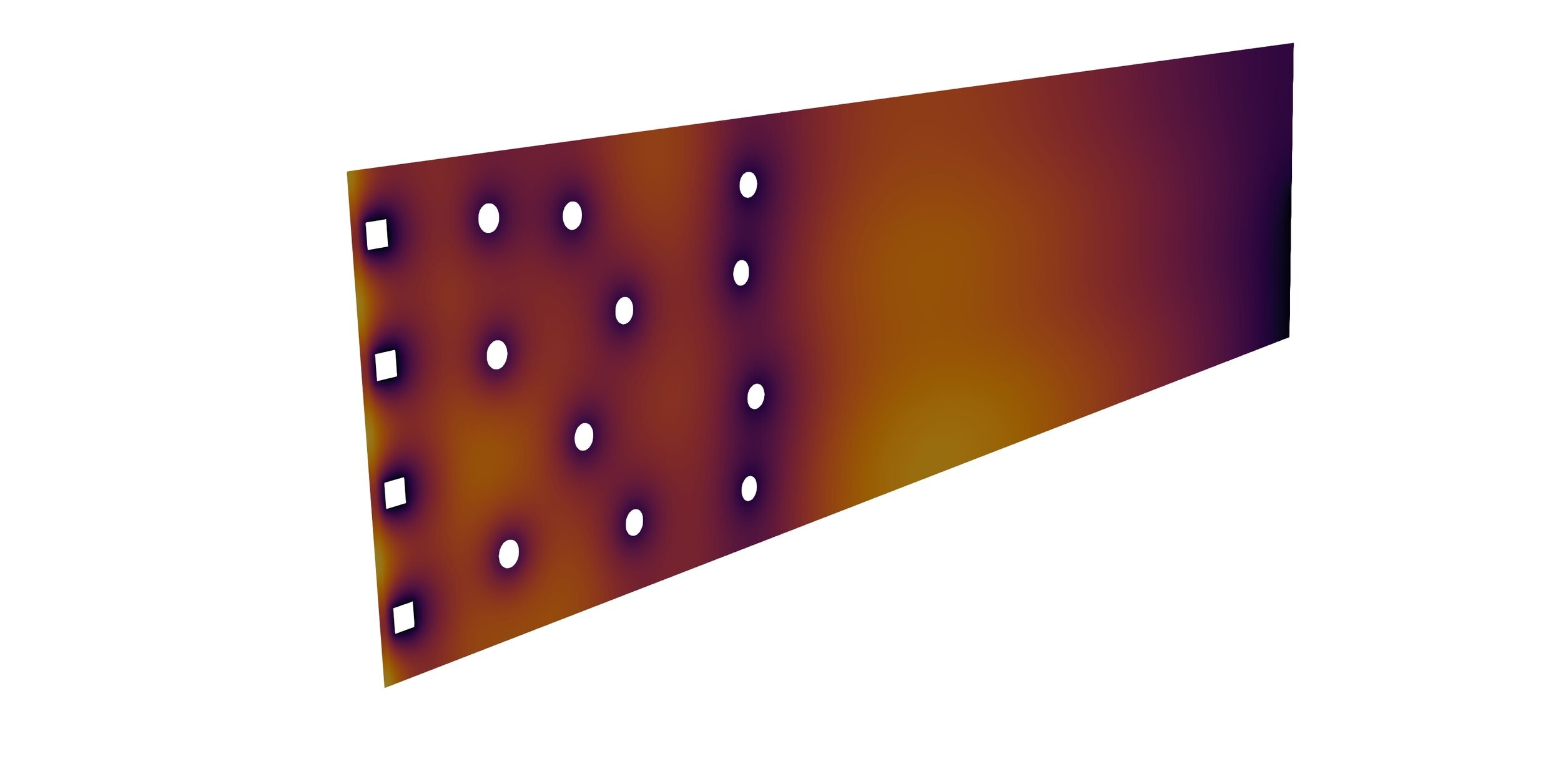
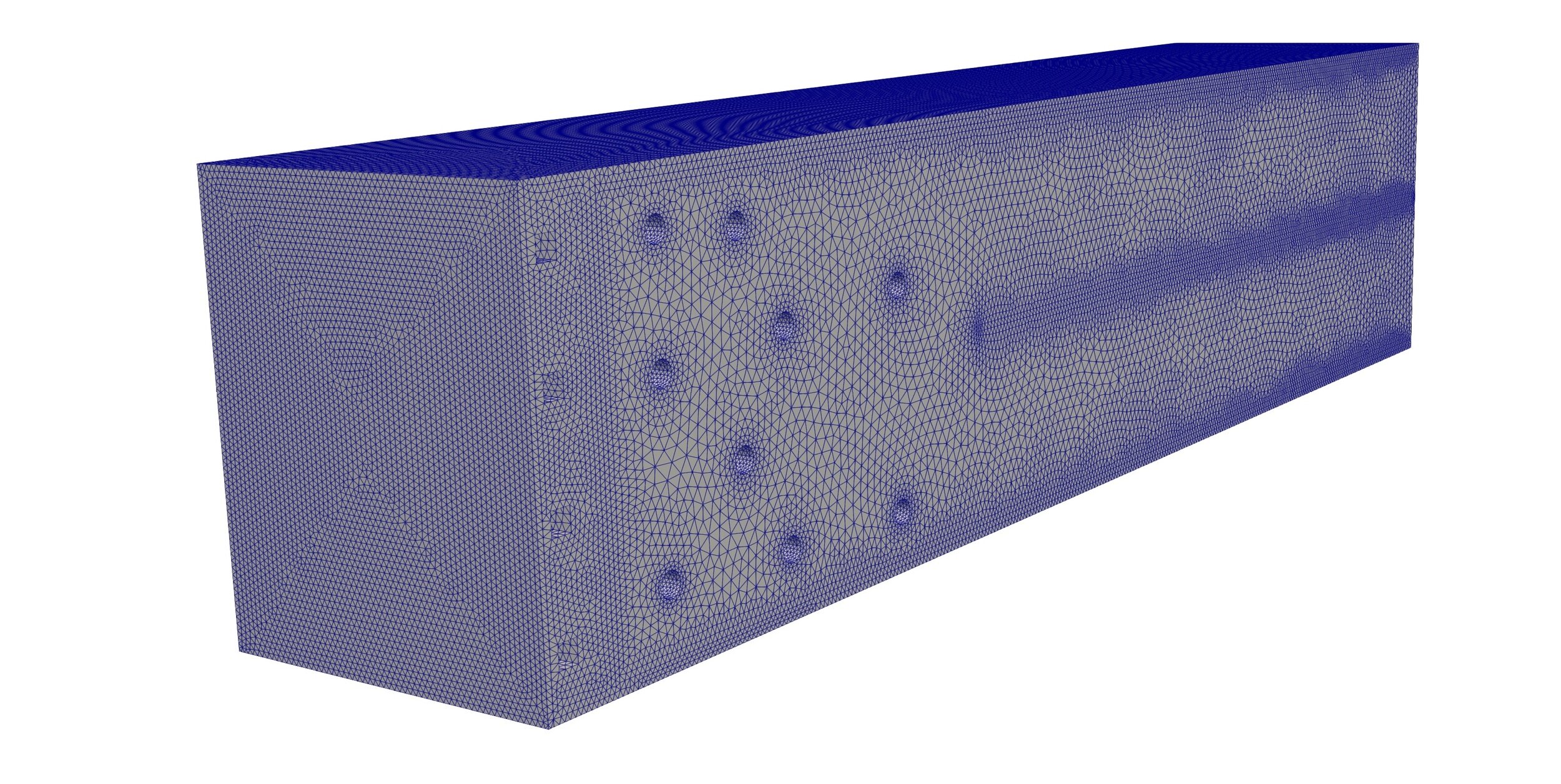


Arena et al Energies 2023, 16, 2069

Simulation of a WCLL breeding blanket from CAD files
1) Mesh generation
2) Heat transfer simulation
3) 2D slice
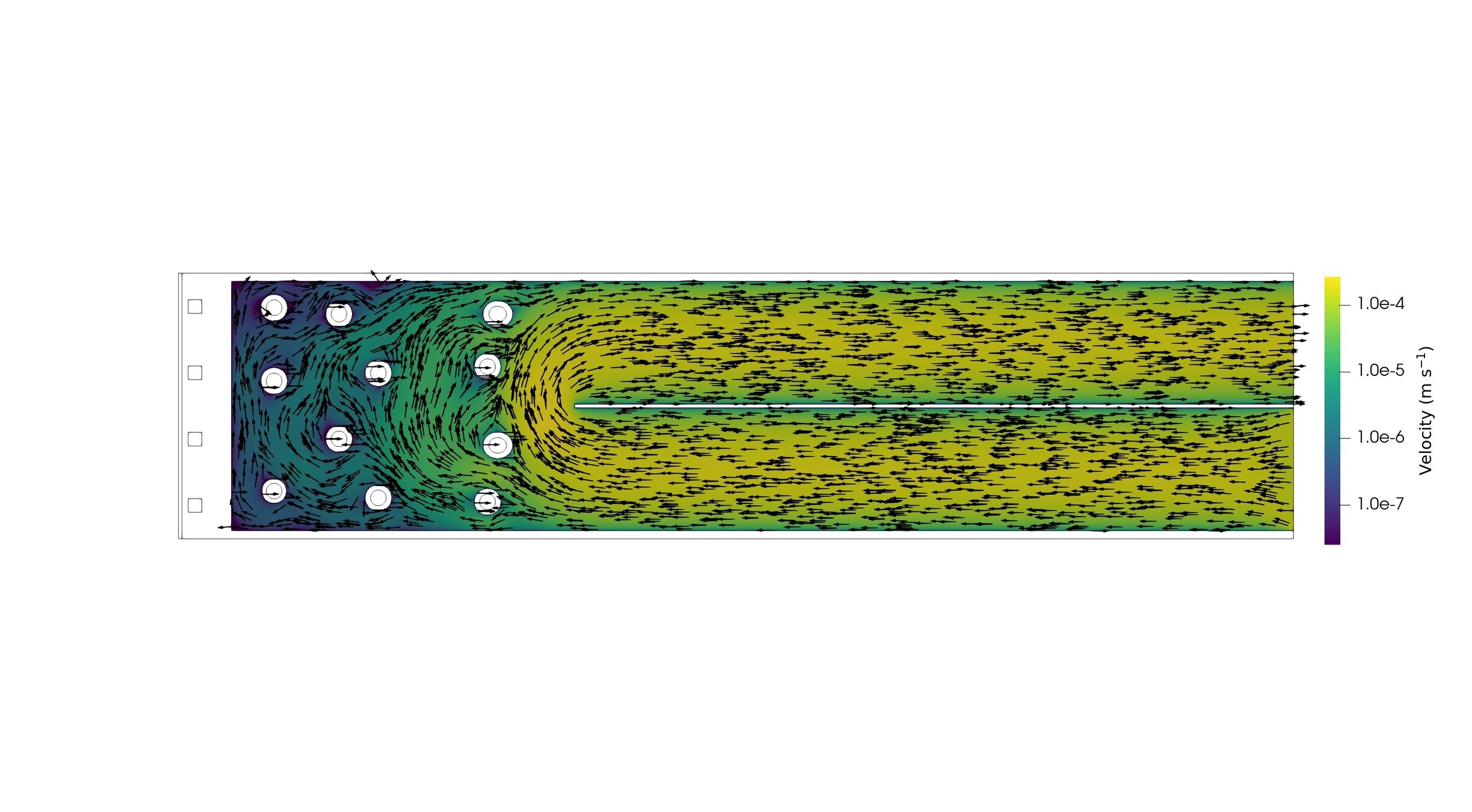
4) Fluid dynamics
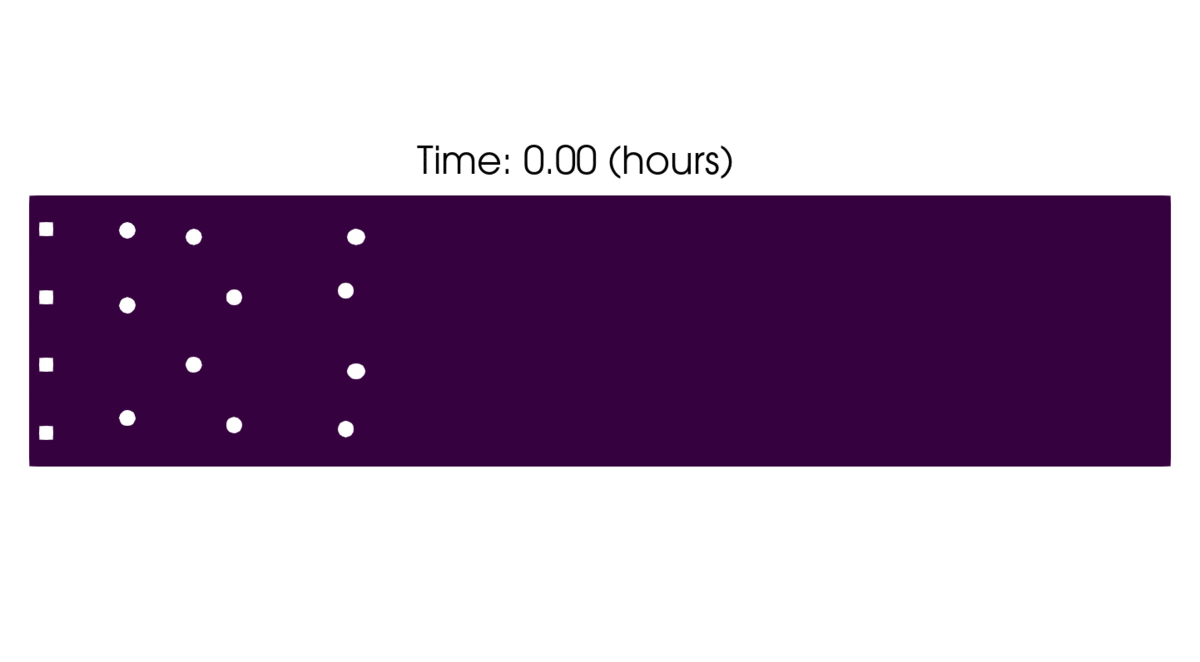
5) H transport
In order to design a breeding blanket we need to...
✅Understand T transport in the breeder
✅Understand the interaction of T with the solid materials
✅Develop and validate modelling tools for design optimisation
Experimental techniques
FESTIM modelling
LIBRA experiment
✅Demonstrate a proof a concept
The EU-DEMO plan
Step 1. Build ITER...
Step 2. Plug some mockups in the Tritium Breeding System (TBS)
Step 3. Pick the best one and build a FULL SCALE prototype for DEMO
Step 4. Hope it works at scale 🤞
Plan B
There is no plan B.

ITER

TBS

DEMO
Let's test it before ARC

What is the smallest blanket that can demonstrate a TBR of 1?
LIBRA
Liquid Immersion Blanket tritium Robust Accountancy
Objectives
🎯T self-sufficiency with DT neutrons
🎯Experience with molten salt handling
🎯Tritium extraction from molten salts

500L FLiBe
14 MeV neutron source
Inconel
double wall
Li + n → T + He
Neutron multiplier
The LIBRA experiment

Tritium transport
Transport mechanisms:
- Diffusion
- Advection
Release pathways:
- Release gas/liquid interface
- Permeation through walls
The LIBRA experiment
The LIBRA experiment

He
Tritium detection

The actual design is a bit more complex
LIBRA was designed to achieve TBR ≈ 1

Neutronics simulations

Let's start smaller
- 14 MeV neutron generator \( 10^{10} \) n/s
- 500 L of FLiBe
→ Never done at MIT ⚠️

The BABY programme
100 mL
CLiF salt
Top release
Wall release
A simple 0D model is used to simulate BABY
= source - losses
inventory evolution
\(k\) mass transport coefficient
\(A\) surface area
neutron rate

- 2 x 12 h irradiation
- \( \mathrm{TBR} \approx 3 \times 10^{-4} \)
- \( \Gamma_n \approx 4 \times 10^8 \) n/s (fitted)
- Mass transport coeffs. \( k_i \) (fitted)
100 mL
CLiF salt
Top release
Wall release
THIS is what we can measure!


Kumagai's experiment
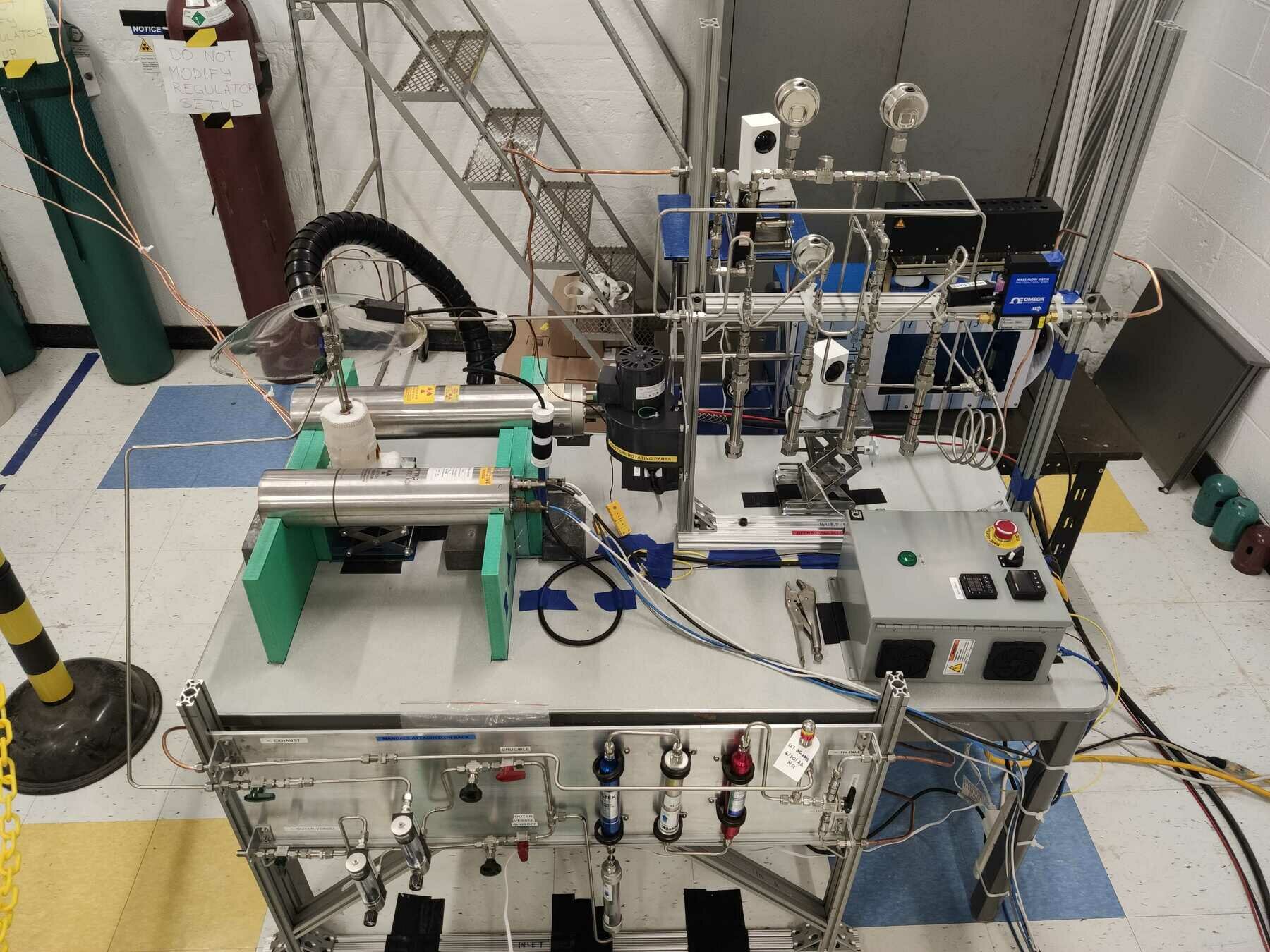



Salt crucible and two DT neutron sources
Tritium collection system

Temperature control
The BABY experiment breeds tritium at a smaller scale

Bjørnstad, et al. (2014). The Current Status and Future Trends on Radioisotope Application in Industry.
HT, T2 → HTO
#1
#2
#3
#4

HTO, TF
HT, T2

Furnace
Tritium collection and accountancy
→ then analysed with Liquid Scintillation Counting

Liquid Scintillation Counting

Counts between 0-18.6 keV for tritium detection
Theoretical activity (Bq)
Measured activity (Bq)

LSC tests
⏱️50 min

HTO, TF
HT, T2
15 Bq of tritium have been bred

Collected tritium
1 Bq = 10\(^{-15}\) mole of T
Collection effiency 99.8%

Cumulative tritium production agrees with simulation
Next experiments will give information on the wall desorption
Cumulative tritium release

1L of salt
Top release gas sweep
Outer-vessel for capturing permeated tritium
Our next steps
- Increase the volume of salt to 1L
- Replace CLiF by FLiBe
- Improve the neutron detection system
- Build and validate FESTIM model of BABY
- Demonstrate TBR = 1 with LIBRA


TBR



BABY
LIBRA



Takeaways
- Tritium breeding is critical to the fusion economy
- We have to de-risk the blanket technology before any pilot plant
- LIBRA aims to be the world's first blanket demonstration
- To design a full breeding blanket, we need:
- Experiments to characterise materials
- High-fidelity validated models

Meschini et al Nucl Fus, 2023
Tritium breeding far from being the end of the journey
✅Can we breed enough tritium?
❓Can we extract it?
❓Can we separate it?
❓Can we store it?
❓Does it get trapped somewhere?
❓Can we recover it?
Thank you very much!
Any question?
Tritium Transport in Breeding Blankets (PSFC seminar)
By Remi Delaporte-Mathurin
Tritium Transport in Breeding Blankets (PSFC seminar)
- 811




